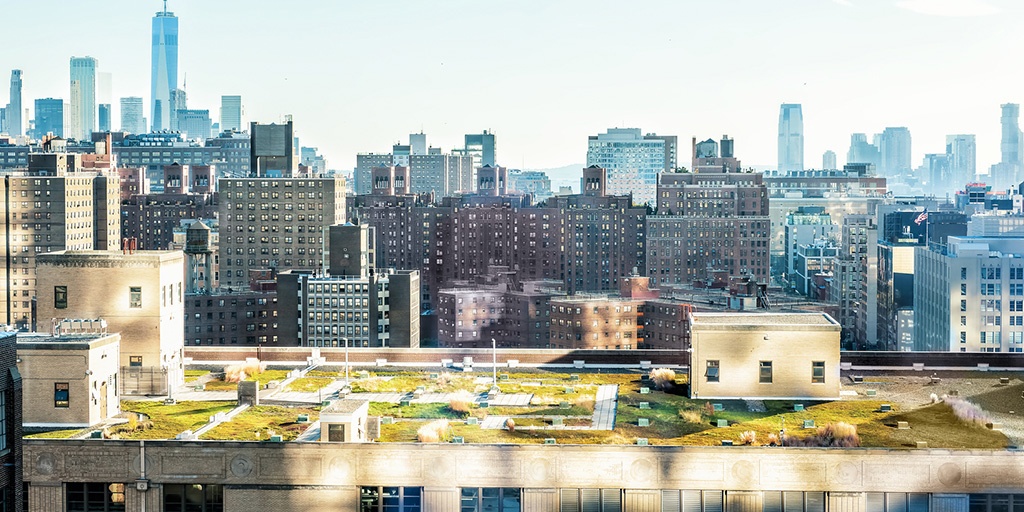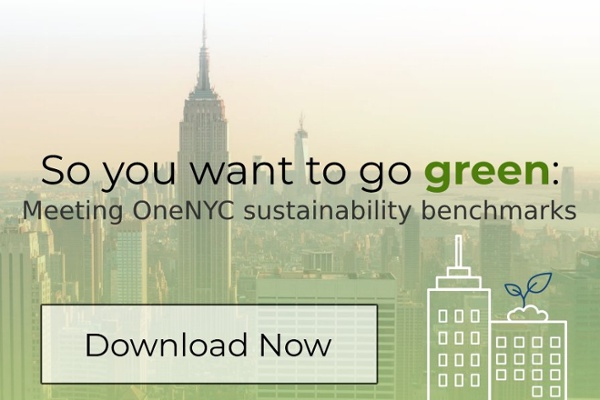Local Laws 92 and 94 are key legislative efforts of the Climate Mobilization Act, a package of 2019 laws intended to help the city meet OneNYC 2050 goals for sustainability, energy efficiency and emission reductions. However, Local Laws 92 and 94 are distinct in that they have compliance mandates that go into effect the same year the laws were passed in, whereas other components take effect in the near future.
It's crucial to get up to speed on the green roof and solar panel installation requirements of these laws, and quick, to comply with the November 15, 2019 effective date of the laws.
What are Local Laws 92 and 94?
Local Laws 92 and 94 both address the inclusion of green roofs and solar panels by amending building code. Local Law 94 is the main legislative achievement of the two in that it requires all new construction and certain major renovations create a "sustainable roofing zone." This translates to covering all available roof space with green vegetation, solar photovoltaic (PV) electricity generating systems or a combination of both. The law is notable for the fact that is applies to all buildings in NYC, both residential and commercial. Applicable renovations include vertical and horizontal extensions and modifications to an existing roof requiring a permit. There are exceptions made for certain roofs, such as occupied roofs and required building setback roofs. The DOB further details the exceptions to providing a sustainable roofing zone in a Buildings Bulletin they released on October 24, 2019 to clarify the requirements of the two Local Laws.
Local Law 92 was passed to adjust the requirements for smaller buildings. It also includes language requiring the Department of Housing Preservation and Development to study the impacts of compliance on construction affordability.
Starting on November 15, 2019, all new applications involving a new building roof, or a new roof deck or roof assembly, must comply with the provisions of Local Laws 92 and 94. In addition to new applications, the law also applies to already-filed applications not in “Approved” status. Design Professionals should be aware that the new roofing requirement will be added as a Required Item on all New Building (NB) and Alteration 1 – enlargement applications that are not in approved status on November 14th at 3 p.m.
What are the benefits of green roofs?
The expansive scope of the laws is a broad reflection of the citywide effort to improve the climate and address related concerns proactively. Green roofs — especially when constructed at this scale — can have a major impact on emissions, energy and livability. When constructing a sustainable roofing zone, developers have two options:
- Planting green vegetation: According to Green Roofs for Healthy Cities, at a minimum, green roof systems include waterproofing, root barriers, drainage, filter cloth, a lightweight growing medium and plants. They may take the form of a rooftop vegetable garden, a green wall with native plants or hydroponic towers. Roofs with partial or total vegetation help absorb rainwater, provide insulation and combat urban heat island effects, which can lead to decreased energy costs and improved air and water quality.
- Installing solar panels: The advantages of having solar panels are clear for businesses and homeowners, who are able to generate their own electricity for consumption or sale. This can offset energy costs through decreased utility bills or new revenue. PV systems can also help buildings comply with other parts of the Climate Mobilization Act that address emissions.
One other benefit to consider is the property tax abatement for solar green roofs currently being offered. A one-year abatement of $4.50 per square foot of green roof (maximum $100,000 or building's tax liability, whichever is less) is available to owners, provided they meet certain criteria. At least 50% of the eligible roof space must be covered by green roof and have a vegetation layer of which at least 80% is covered by plants.
Taking an example from NYC Parks
A leader in green roof advocacy and operation is NYC Parks, which maintains more than 200,000 square feet of green roofs all over the city. These include gardens, both vegetable and herb, and honeybee hives, among others. Its most notable achievement is the 45,000-square-foot green roof at Randall's Island. The "Five Borough Green Roof" is the only location in the country to feature dozens of systems on one roof, and has been used as an experiment site for the construction and assessment of different systems. Artie Rollins, assistant commissioner for citywide services at the Parks Department, told AM New York that the plan is to have 1 million square feet of green roofs within the next five years.
Compliance steps to take
It's important to be aware of compliance first steps because of the November 15 effective date. New commercial and residential construction, and projects involving major renovations, will have to address the inclusion of sustainable roofing zones and start thinking about:
- Determining whether vegetation or solar panels are the best fit, given conditions like shade and available space constraints.
- Getting a structural analysis.
- Identifying solar panels that comply with state and city code.
Local Laws 92 and 94, as well as the overall Climate Mobilization Act, will make big changes to the NYC building code. Working with the code and zoning experts at Milrose can help developers and owners navigate the new requirements. Contact us today for more information about the intersection of New York City's OneNYC 2050 sustainability goals and the city's building code and zoning requirements.
Interested in learning more about how to meet New York City's new sustainability benchmarks? Download our OneNYC sustainability benchmarks white paper for guidance on how to comply with the new sustainability requirements for lighting, boiler efficiency, air leakage reduction, safety and more.








